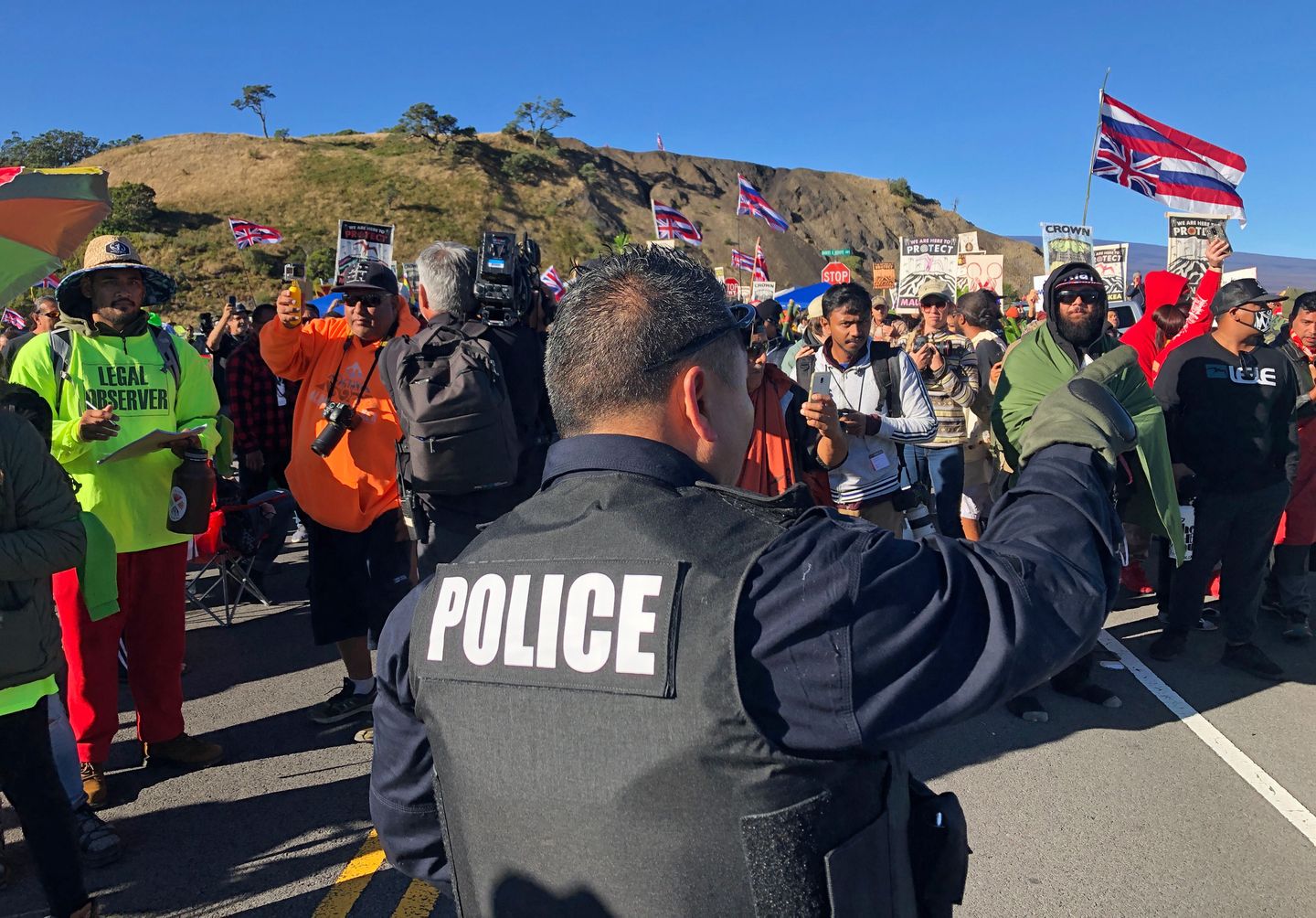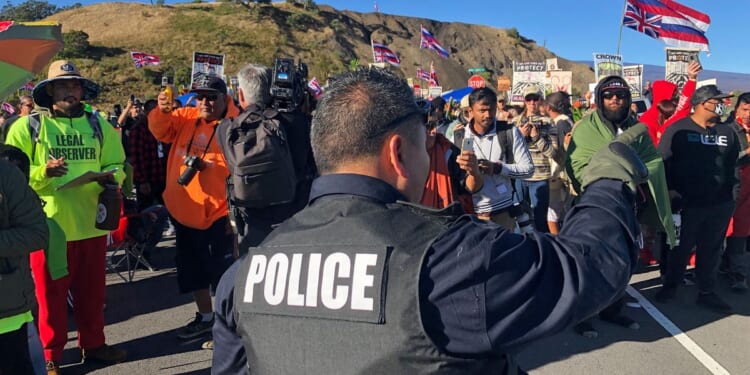
For police and prosecutors trying to solve violent crime in Hawaii, the state’s isolation can get in the way.
Crucial evidence has to be shipped to crime labs on Oahu or even the mainland, often in a FedEx box that can get lost in the mail. Victims hop on planes and leave the island and there’s only so much prosecutors can do to make witnesses feel safe when the accused shares the same small island.
That’s on top of a lack of resources.
“We don’t have enough detectives. We don’t have enough patrol officers to support those detectives. We don’t have enough crime scene analysts. We don’t have enough lab analysts,” Michelle Puʻu, supervising deputy attorney general in the criminal justice division, said at a briefing for lawmakers last week.
Hawaii doesn’t have enough lab equipment either, and what agencies do have isn’t sophisticated enough for some kinds of drug and alcohol analysis, according to Puʻu, making it impossible to do some “very basic things.”
All that has contributed to slippage in Hawaii’s clearance rate – the number of cases that end in an arrest or are closed when a suspect dies or a witness backs out. A decade ago, law enforcement in Hawaii beat the national average at solving violent crime. Now, they are on par with that average.
Honolulu police, for example, solved about one in three violent crimes in 2024, according to Marshall Clement, director of the Council of State Governments Justice Center, a national research group.
Better technology leads to more evidence, meaning that ”arrests that we’re making today are more likely to be the individual who committed the crime.” But, Clement added, “there’s still no getting around the fact that we have fewer people being arrested when a serious, violent crime occurs today than ever before since we started collecting data in the 1960s.”
Police have never arrested the person who shot Richianna DeGuzman, more than two years after the 17-year-old was left partially paralyzed by gunshots to the head and the thigh.
The Honolulu Police Department told Guzman’s family that she had been caught in the crossfire in a gang-related shooting in Waianae in June 2023. They identified a 20-year-old male suspect, but he was not arrested because the court determined there wasn’t sufficient probable cause.
“Because her shooter wasn’t prosecuted, somewhere inside of me knew that this wasn’t the end,” DeGuzman’s mother, Susan Mahiai, told Civil Beat in October 2024. “When people do bad stuff like that people think they can get away with it, it goes on and on and on.”
DeGuzman’s is one of the thousands of violent crimes statewide that have not been closed in the last three years, including more than a dozen murders.
For the first time, the public in Hawaii can compare violent crime rates and the rate at which all four counties solve them, thanks to a newly launched database from the state Attorney General.
The track record of clearing violent crimes varies widely by island. Honolulu County had a rate of about 35% for crimes including rape, murder, aggravated assault and robbery in 2024. On Kauai, where there are substantially fewer violent crimes, the percentage of cases police cleared was higher, at 49%. In Maui County and Hawaii County, it was 55% and 49% respectively, according to the new dashboard.
Certain violent crime rates, such as rape, are solved less than a third of the time in every county.
Weeks after the database launched in October, police leadership from Honolulu, Maui and Hawaii counties, as well as the state Department of Law Enforcement, were called before lawmakers to explain what gets in the way of solving more violent crime. In the briefing, prosecutors from Honolulu and Hawaii counties and the Attorney General’s Office also weighed in.
Last year, police in Honolulu and Kauai solved about half of homicides and aggravated assaults across the state and just a quarter of rapes and robberies, according to Clement’s analysis, which did not include Maui and Hawaii counties.
Maui County has seen a 6% drop in violent crime, but it is still stretching its understaffed workforce, according to Assistant Chief Greg Okamoto, who leads the Support Services Division.
On the Big Island, police solved about 59% of aggravated assaults last year, but only about a third of rape and sexual assaults, according to Maj. Sandor Finkey. Homicides were even lower: about 20%.
“Homicides, those types of cases take a while, sometimes more than a year, but at this point that’s where we’re sort of lagging behind the state average,” Finkey said.
The number of unsolved violent crimes is substantial, according to numbers presented in the hearing and on the dashboard. Of about 32 murders committed across the state last year, 14 have not been cleared, according to the most recent department data provided to the Attorney General’s Office earlier this year.
To solve more crimes, departments need more police, particularly in investigative roles, Clement told lawmakers.
Some counties are facing drastic detective shortages. In Maui County, for example, the detective force is about 42% of what it should be, according to Okamoto.
The state Department of Law Enforcement, which handles crimes related to the airport, harbors and prisons, also doesn’t have enough detectives. It has handled about 700 felonies since it was formed in 2024. With 15 detectives, that works out to a caseload of about 50 each, according to department Deputy Director Jared Redulla.
Conversely, the Criminal Investigative Division, which handles murders, domestic violence and other violent crimes, is actually relatively well-staffed with at least 85% of positions filled, according to Brandon Nakasato, the acting assistant chief who oversees several investigative divisions. There are 11 vacant detective positions in that unit, according to HPD public information specialist, Jocelyn Oshiro.
One problem, law enforcement leaders from multiple county departments agreed, is that long-time detectives are leaving investigative work to return to patrol, where they have more opportunities to boost their earnings by working overtime.
Detectives’ work hours are dependent on their caseload. For patrol, there’s a set minimum number of officers needed for each shift. Detectives who drop down to patrol can not only drive up their take-home pay with overtime, they keep their higher detective salary.
That’s particularly appealing as officers near retirement and are eager to drive up their pensions, Okamoto said. For public employees hired before 2012, pensions are calculated using the salary from three highest years, overtime included.
At the briefing last week, legislators questioned how more skilled investigative work could end up paying less than patrol duty. Fixing the problem would take an adjustment of the base pay for detectives, something that requires changes to the police union’s collective bargaining agreement.
The disincentive for police to do investigative work near the end of their careers impacts the strength of cases, Puʻu said, because “that experience walks out the door.”
Hawaii’s unique geography also creates complications for police and prosecutors. Being on a small island chain impacts everything from evidence analysis to getting witnesses to testify.
When police on a neighbor island have crime scene evidence that needs to be analyzed, it has to be sent off-island. Honolulu police handle most of the testing of trace evidence, DNA and firearm ballistics for all the counties in the state.
Unlike other states, where a law enforcement officer might drive evidence to a nearby crime lab, here evidence is sent by mail, opening up the risk that it could get lost or damaged.
Limitations don’t end when evidence reaches Oahu.
Hawaii doesn’t have a statewide full-service crime lab. When HPD has too many cases for its lab to handle, the department contracts out with private companies. There are also certain things HPD’s labs can’t do, such as test for alcohol in certain samples. The state has a drug analysis lab run by DLE, which will take cases from other counties but doesn’t handle things such as alcohol samples, firearms or explosives.
Often, departments are forced to send their samples to California or elsewhere on the mainland. That can cost up to $30,000, according to Hawaii County Prosecutor Kelden Waltjen.
Hawaii’s isolation creates unique barriers for witnesses and victims, as well, particularly if they are tourists. If they live out of state, or even on a different island, they have to be flown in for trial. Prosecutors can pay some of the costs, but the amount is capped and barely covers the cost of a hotel, according to Puʻu, so people may have to pay out of their own pockets for the privilege of taking the stand.
“That’s a reality of getting a person to come here and testify and go to court,” Puʻu said. “It’s very hard to convince people to follow through with prosecution and trial.”
A case is considered closed if witnesses or victims stop cooperating with law. When the victim knows the perpetrator, they can be reluctant to testify. That’s another way that geography works against closing cases.
“People always want to know what I can do to protect them,” Annaliese Wolf, a prosecutor on the Big Island, said.
“Even if you go to another island, people still can find you there,” she added. “It’s such a small community.”
Wolf often asks the court for a no-contact order or encourages people to file a temporary restraining order, which is similar but stronger and can be more quickly enforced.
She has charged people with witness intimidation or filed motions to remove someone’s access to bail. Once, Wolf even played for a judge the calls a defendant in a domestic violence case had made to his girlfriend from jail pressuring her not to talk.
But those protections only go so far here. In some states, like Massachusetts, police are required to arrest people for violating a restraining order. Not so in Hawaii, where police have discretion in deciding what to do.
That can make it extra difficult to get people to cooperate with police and prosecutors, Puʻu said.
“Everybody knows a TRO is a piece of paper,” Puʻu said, “and is only as good as the piece of paper it’s written on and the enforcement that follows through with that.”
___
This story was originally published by Honolulu Civil Beat and distributed through a partnership with The Associated Press.










